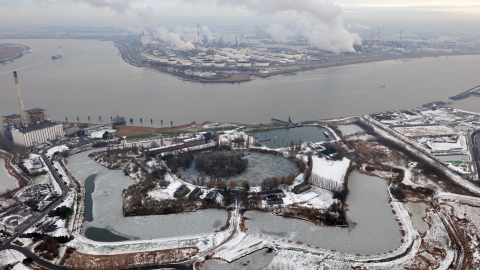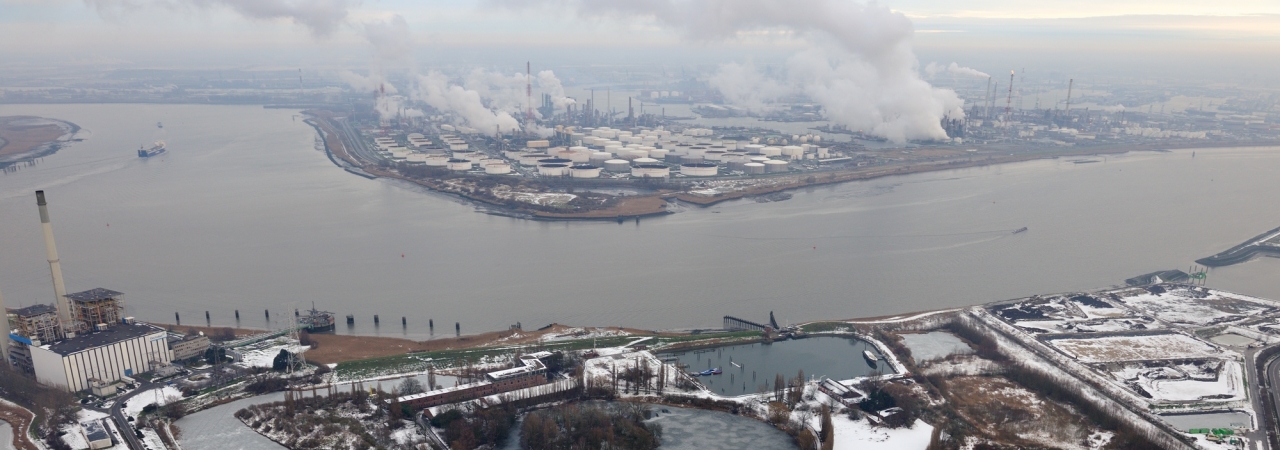In 1584, Fort Sint-Marie on the left bank together with Fort Sint-Filips were built by Alexander Farnese to lay siege to Antwerp. Between these forts, the floating bridge was constructed. This blocked shipping over the Scheldt and thus supplies to the town. Sint-Marie also played an important role in the Battle at Kallo (1638) and belonged to the Line Dyke Nine Years’ war (1688-1697). The fort grew further into a polygonal complex with six bastions and double moats. There were also two harbours: one in the fort and one to the southeast. Because the substrate was rich in peat, a pond was dug in the middle of the fort to get earth for the embankments. Modifications in 1832 and later meant that the fort was constantly changing. In 1870, after the Franco-German war, the left bank defence was no longer sufficient and it was decided to build a Verschanst Kamp Linkeroever. Between Sint-Marie and the new Fort Zwijndrecht, the Defensive Dyke was constructed as a flood barrier for the inundation area of the Melselepolder. An underwater battery for torpedoes was later installed at Sint-Marie. Since 1961, the fort has been a base for the Belgian navy, and also accommodates the secondary maritime school.
Despite the many modifications and new building, the basic structure has been retained with double moat, central pond, underwater battery and casemated battery. The defensive dyke with moat has also been preserved, but is not directly connected to the fort.
The fort is situated near the village of Kallo (Beveren) and easily recognisable on the land side by the preserved embankments and moat. On the side of the Scheldt, the rampart disappeared due the construction of a marina.
The fort is open to visitors during the school’s Open Days (KTA-Zwijndrecht – Cenflumarin) or on request. It is not possible to walk or ride around the moat.




